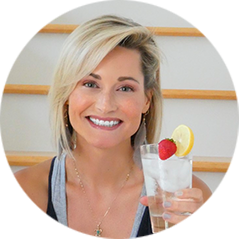Expert Advice

Acella Pharmaceuticals is partnering with Heather Procknal, NBC-HWC-CHC, to bring greater awareness to the importance of thyroid care and education. This post was sponsored by Acella Pharmaceuticals.
Disclaimer: The information provided is for educational purposes only and does not substitute professional medical advice. Consult a medical professional or healthcare provider before beginning any exercise, fitness, diet, or nutrition routine. Acella Pharmaceuticals does not endorse, promote or sponsor any products or brands mentioned in this article. The views expressed here are those of the author.
How Toxins Affect Your Thyroid & What To Do About It
It’s probably no surprise that you are exposed to numerous chemicals and toxins on a daily basis. Invisible toxins are lurking everywhere; in your home from the bedrooms to the kitchen, in the water you drink, the food you eat, and the air you breathe. Aside from removing yourself from modern society or opting to live in a bubble, complete avoidance of toxins is nearly impossible.
What are the impacts of toxin exposure?
While there are currently limited studies that prove low-dose exposure causes adverse human health concerns, the National Institute of Environmental Health Sciences tends to disagree by reporting that “…there is a large body of research in experimental animal and wildlife suggesting that endocrine disruptors may cause numerous health issues including, increases in mammary, ovarian and prostate cancers as well as increases in immune and autoimmune diseases and some neurodegenerative diseases.” 1
These negative health impacts are making the public take notice as more and more mainstream consumers are looking for safer healthier options to everyday items.
Where are these toxins (i.e. endocrine disruptors) hiding?
KITCHEN
• Cleaning supplies, soaps and detergents – Triclosan, DEA (diethanolamine), MEA (monoethanolamine), TEA (triethanolamine), formaldehyde, ammonia • Non-stick cookware - PFOA (perfluorooctanoic acid) • Plasticware, plastic baggies and plastic wrap – BPA, PVA, phthalates • Food - Pesticides, germicides, preservatives • Water – Fluoride and chlorine (two of the main culprits)
A 2018 study found that fluoride impacts human thyroid hormones, especially TSH and T3, even in the standard concentration of less than 0.5 mg/L.2
BATHROOM
The National Institute of Occupational Safety and Health reports that up to one-third of the substances used in the fragrance industry are potentially toxic.
Because chemical formulas of fragrances are considered trade secrets, companies aren't required to list their ingredients but merely label them as containing "fragrance." You’ll likely find “fragrance” listed in most of the items listed below.
• Tub, shower and toilet cleaners – DEA and TEA, ammonia, sodium hypochlorite (bleach), fragrance • Shampoo and conditioner - Sodium Lauryl Sulfate (SLS) and sodium laureth sulfate (SLES), fragrance • Body wash – SLS, SLES, fragrance • Facial cleanser – Parabens, SLS, SLES, fragrance • Hair spray - Fragrance • Makeup – Parabens, BHA, BHT, phthalates, fragrance • Perfume and cologne - Fragrance • Feminine hygiene products – Bleach and fragrance • Toothpaste – Triclosan and fluoride
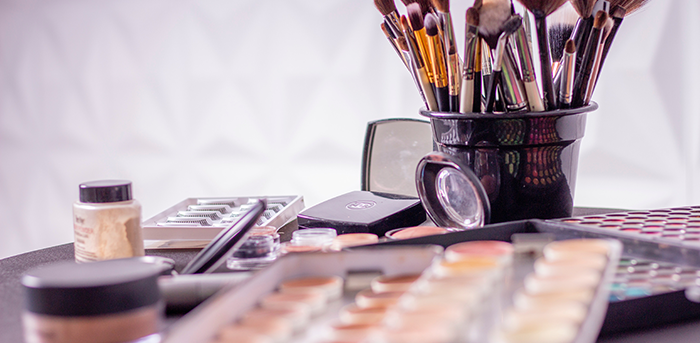
BEDROOM
• Furniture – VOCs (Volatile Organic Compounds) • Mattresses - Flame retardants, formaldehyde, benzene • Sheets and blankets - Formaldehyde • Clothing – Especially dry-cleaned garments exposed to chemical solvents perchloroethylene, also known as tetrachloroethylene, PCE or perc.
AIR & FLOOR
• Air fresheners – Aerosol sprays, candles, wax diffusers and wall plug-ins - Fragrance • Carpet and floor cleaners - Fragrance • Window cleaner – Chlorine, ammonia, fragrance • Carpets – Off-gassing of 4-PC, benzene and toluene • Vinyl and synthetic flooring – VOCs, brominated flame retardants • Hardwood adhesives – VOCs • Wall paint - VOCs
This is not an all-inclusive list, but you get the point. It’s A LOT! With that said, it’s not all doom and gloom. There are some simple and actionable steps you can take to reduce the burden on your body’s endocrine system and support your thyroid health.
Action Tip 1 – Take your shoes off at the door
Does this statement conjure memories of your mother saying this when you were a kid?
The Environmental Protection Agency (EPA) found that lawn pesticides tracked indoors can exist in carpets and flooring for years. Further studies suggest that 80 percent of most people's exposure to pesticides occurs indoors and that measurable levels of up to a dozen pesticides have been found in the air inside homes. 3 By simply taking your shoes off at the front door, you can decrease your family’s and pet’s exposure to harmful toxins.
Action Tip 2 – Open the windows and get a few HEPA air filters
Some experts suggest that inside air can be significantly more polluted than outside air due to the off-gassing of chemicals from materials like carpets, vinyl flooring, mattresses and furniture.
Allow those chemicals to escape by cracking open your windows and turning on a fan when the weather permits. Consider investing in a good quality HEPA air filter to keep in the room or rooms you spend the most time in.
Action Tip 3 – Read your ingredient labels
Your skin is your largest organ. Be mindful of what you put ON your body since it will end up IN your body. The next time you pick up your facial cleanser, shampoo, deodorant, body wash or other personal care items, look at what’s on the ingredient label.
Does it list any of the following?
BHA and BHT. Synthetic antioxidants used to extend shelf life. They are likely carcinogens and hormone disruptors and have been linked to liver damage.4 Found in lipstick, moisturizers, diaper cream and other cosmetics.
Oxybenzone. Sunscreen agent and ultraviolet light absorber linked to irritation, sensitization and allergies, and possible hormone disruption. Found in sunscreen and moisturizer.
Parabens (methyl-, isobutyl-, propyl- and others). A class of preservatives commonly used to prevent the growth of bacteria and mold. Parabens are endocrine disruptors and may alter important hormone mechanisms in our bodies, including thyroid function. Found in shampoo, conditioner, facial cleanser, body wash, body lotion and makeup.
Polyethylene glycol (PEG compounds). Widely used in cosmetics as thickeners, solvents, softeners and moisture carriers. Depending on manufacturing processes, PEGs may be contaminated with measurable amounts of ethylene oxide and 1,4-dioxane, which are both carcinogens. Found in creams, sunscreen and shampoo.
Phthalates (DBP, DEHP, DEP and others). A class of plasticizing chemicals used to make products more pliable or to make fragrances stick to skin. Many researchers believe that phthalates disrupt the endocrine system. Found in synthetic fragrance, nail polish, hairspray and plastic materials.
Triclosan and triclocarban. Antimicrobial pesticides toxic to the aquatic environment; may also impact human reproductive systems. Found in liquid soap, bar soap, and toothpaste
Check your personal care ingredients using the Environmental Working Group (EWG) standards of safety to see how they stack up: https://www.ewg.org/skindeep. EWG offers some safer alternatives and updates its list of products frequently.
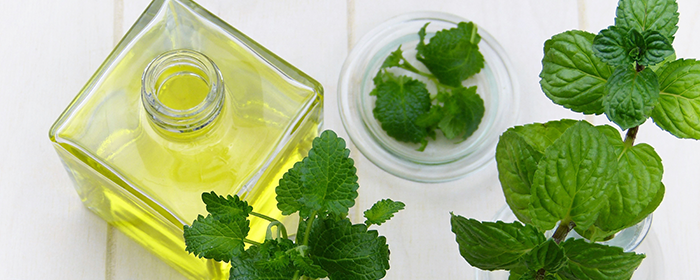
Action Tip 4 – Make your own multi-purpose cleaners
REFRESHING GLASS CLEANER
• 3 cups filtered water • 1/4 cup rubbing alcohol or vodka (use the cheap stuff) • 1/4 cup vinegar • 20 drops peppermint or spearmint essential oil
Combine all ingredients in a glass quart-sized spray bottle. Shake to combine, then spray on mirrors, windows or stainless steel. Wipe off with lint-free towels or old newspaper for a streak-free shine. Feel free to swap out the essential oils to suit your preference. Be careful with using any acidic oils on marble, as some oils will erode the surface.
LEMONY ALL-PURPOSE CLEANER
• 2 cups white vinegar • 2 cups filtered water • 1 teaspoon natural dish soap - (NOT castile soap, since it will curdle when mixed with vinegar) • 30 drops lemon essential oil • 20 drops tea tree or Melaleuca essential oil
Mix all ingredients in a glass quart-sized spray bottle. Shake to combine. Spray and wipe on counters, cabinets, sinks, toilets and anywhere else. This stuff smells SO good too!
CITRUS SOFT SCRUB
• 1 cup baking soda • 1/4 cup liquid castile soap • 10 drops lemon essential oil • 10 drops lime essential oil • 10 drops orange essential oil
Mix ingredients together to form a paste (add more castile soap if needed). Apply with rag or sponge, then rinse with clean water. This works especially well on stovetops and grimy sinks.
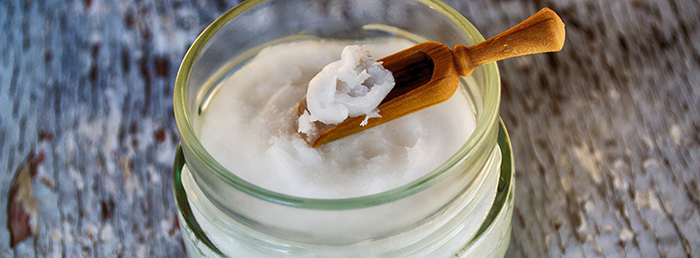
Top Picks for Essential Oils for Cleaning
• Arborvitae • Basil • Bergamot • Cassia • Cedarwood • Cilantro • Cinnamon bark • Clove • Coriander • Cypress • Eucalyptus • Lemon • Lime • Peppermint • Siberian fir • Spearmint • Tea tree/Melaleuca • Thyme • Wild orange
Not feeling like making a DIY cleaner?
Find a list of EWG’s top green cleaning products here: https://www.ewg.org/guides/cleaners/content/top_products
When purchasing new products or cleaning supplies, be sure to read the labels. Don’t rely solely on the words “clean,” “green” or “natural,” as they are not regulated terms and can be misleading when manufacturers use these words to describe toxic products. To ease into making changes around your home, take the detoxifying process one product at a time and make gradual changes that fit with your lifestyle. Otherwise, you may feel overwhelmed and as if you must swap out all of your home and personal care items at once. I hope this leaves you feeling empowered and ready to make a few changes to help detox your home and heal your body.
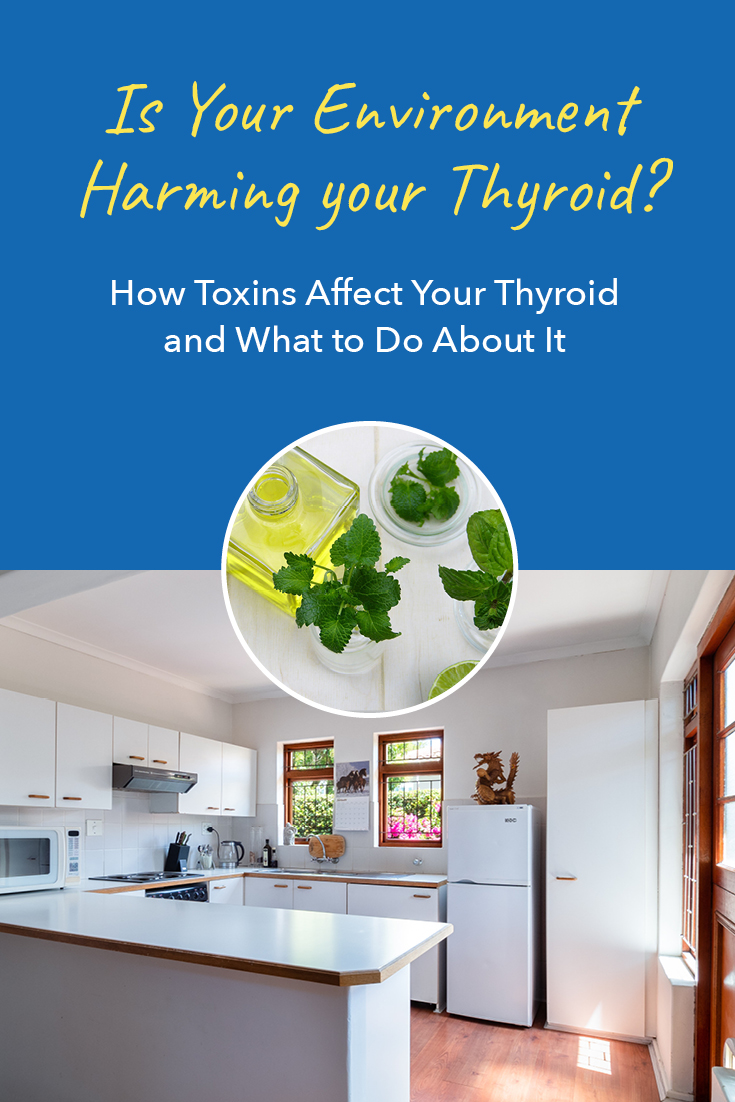
REFERENCES: 1. Endocrine Disruptors. The National Institute of Environmental Health Sciences. Retrieved from https://www.niehs.nih.gov/health/materials/endocrine_disruptors_508.pdf on February 10,2020. 2. Kheradpisheh, Z., Mirzaei, M., Mahvi, A.H. et al. Impact of Drinking Water Fluoride on Human Thyroid Hormones: A Case-Control Study. Sci Rep 8, 2674 (2018). Retrieved from https://www.ncbi.nlm.nih.gov/pmc/articles/PMC5805681/ on February 10, 2020. 3. Pesticides' Impact on Indoor Air Quality. EPA.Gov Website. Retrieved from https://www.epa.gov/indoor-air-quality-iaq/pesticides-impact-indoor-air-quality on February 10, 2020. 4. Ito N, Fukushima S, Tsuda H. Carcinogenicity and modification of the carcinogenic response by BHA, BHT, and other antioxidants. Crit Rev Toxicol. 1985;15(2):109–150. doi:10.3109/10408448509029322. Retrieved from https://pubmed.ncbi.nlm.nih.gov/3899519-carcinogenicity-and-modification-of-the-carcinogenic-response-by-bha-bht-and-other-antioxidants/?from_term=BHA+AND+BHT&from_pos=3 on February 10, 2020.
Note that DTE products, including NP Thyroid®, have not been reviewed by the FDA for safety or efficacy.
IMPORTANT RISK INFORMATION, INCLUDING BOXED WARNING & INDICATIONS
Important Risk Information
Drugs with thyroid hormone activity, alone or together with other therapeutic agents, have been used for the treatment of obesity. In euthyroid patients, doses within the range of daily hormonal requirements are ineffective for weight reduction. Larger doses may produce serious or even life-threatening manifestations of toxicity, particularly when given in association with sympathomimetic amines such as those used for their anorectic effects.
- NP Thyroid® is contraindicated in patients with uncorrected adrenal insufficiency, untreated thyrotoxicosis, and hypersensitivity to any component of the product.
- In the elderly and in patients with cardiovascular disease, NP Thyroid® should be used with greater caution than younger patients or those without cardiovascular disease.
- Use of NP Thyroid® in patients with diabetes mellitus or adrenal cortical insufficiency may worsen the intensity of their symptoms.
- The therapy of myxedema coma requires simultaneous administration of glucocorticoids.
- Concomitant use of NP Thyroid® with oral anticoagulants alters the sensitivity of oral anticoagulants. Prothrombin time should be closely monitored in thyroid-treated patients on oral anticoagulants.
- In infants, excessive doses of NP Thyroid® may produce craniosynostosis.
- Partial loss of hair may be experienced by children in the first few months of therapy but is usually transient.
- Adverse reactions associated with NP Thyroid® therapy are primarily those of hyperthyroidism due to therapeutic overdosage.
- Many drugs and some laboratory tests may alter the therapeutic response to NP Thyroid ®. In addition, thyroid hormones and thyroid status have varied effects on the pharmacokinetics and actions of other drugs. Administer at least 4 hours before or after drugs that are known to interfere with absorption. Evaluate the need for dose adjustments when regularly administering within one hour of certain foods that may affect absorption.
- NP Thyroid® should not be discontinued during pregnancy, and hypothyroidism diagnosed during pregnancy should be promptly treated.
Indications
NP Thyroid® (thyroid tablets, USP) is a prescription medicine that is used to treat a condition called hypothyroidism from any cause, except for cases of temporary hypothyroidism, which is usually associated with an inflammation of the thyroid (thyroiditis). It is meant to replace or supplement a hormone that is usually made by your thyroid gland.
NP Thyroid® is also used in the treatment and prevention of normal functioning thyroid goiters, such as thyroid nodules, Hashimoto’s thyroiditis, multinodular goiter, and in the management of thyroid cancer.
Revised
10/2023
You Are About To Leave This Website
By clicking continue, this link will take you to a website to which Alora Pharmaceuticals’ Policies & Terms of Use do not apply.
^Based on prescriptions filled, NP Thyroid® is the #1 Prescribed DTE in the United States. Source: IQVIA National Prescription Audit (NPA) data on file. Acella Pharmaceuticals, LLC.
